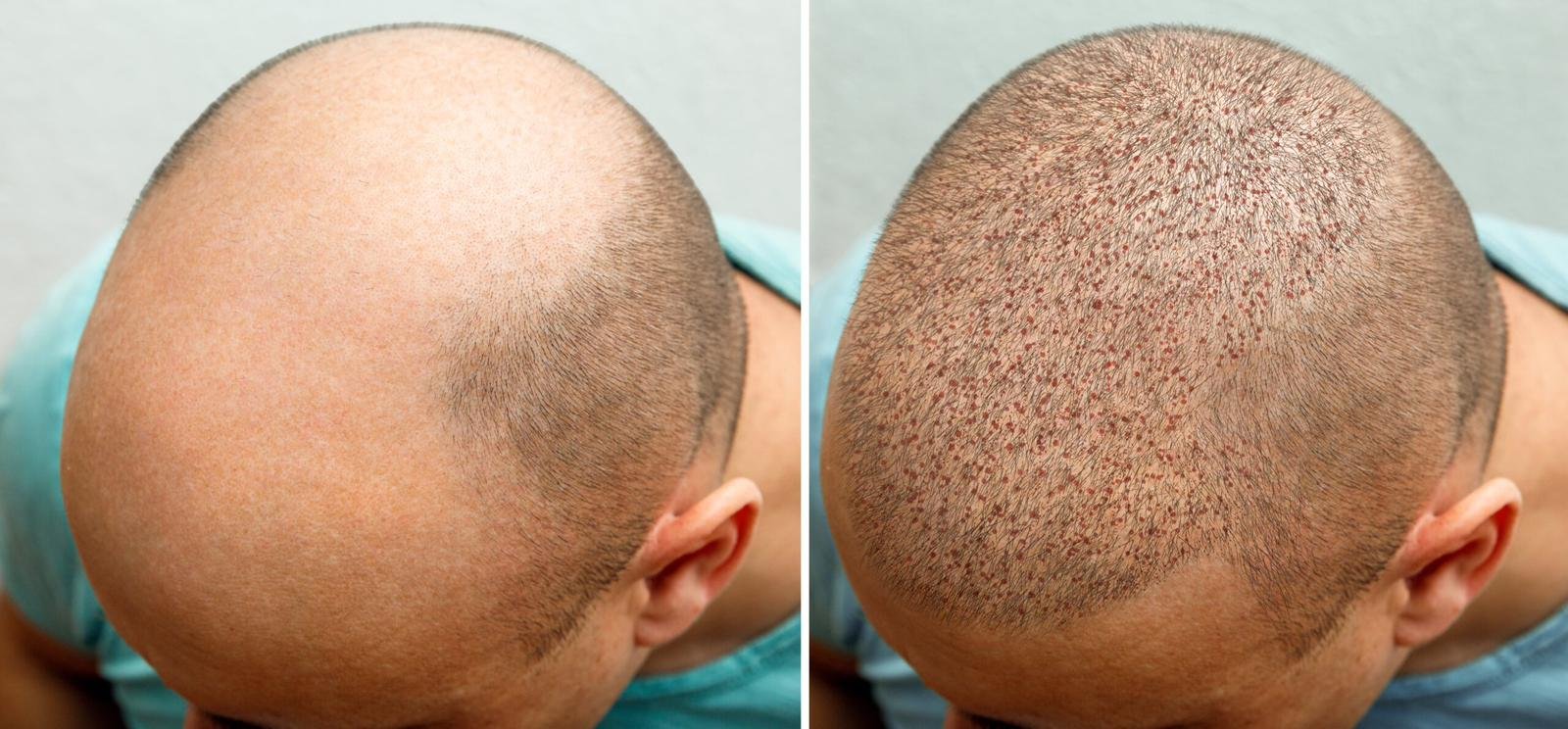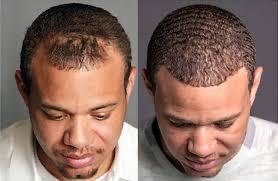Male Hair Loss Patterns
- Home
- Male Hair Loss Patterns

What is Male Pattern Hair Loss?
Male pattern hair loss, also known as androgenic alopecia or male pattern baldness, is commonly associated with hormonal factors in both men and women. There is a genetic predisposition to this condition, meaning if a person’s father or grandfather experienced male pattern hair loss, they are likely to as well.
In male pattern hair loss, the hair follicles undergo a process of ‘miniaturization’, where they shrink in size. This androgenic miniaturization is the primary cause of male pattern hair loss and can affect up to seventy percent of men at some stage in their lives. Here’s a simplified explanation of the condition:
Each hair on the scalp grows from a tiny pocket called a follicle. Normally, the size of the follicle remains constant, allowing hair to grow normally. However, in cases of male pattern hair loss, the follicles shrink for reasons not fully understood. This results in shorter, finer hair growth or even no hair growth at all.
Eventually, despite the follicle remaining alive and open despite its reduced size, hair ceases to grow altogether. This condition is referred to as male pattern hair loss.
Hair Growth Cycle
In general, hair will grow approximately six inches each year. During this period, there are three phases of growth that will occur:
Anagen Phase
The anagen phase represents the active growth period of hair. During this phase, the cells within the hair root undergo rapid growth and division. As a new hair forms, it emerges from the follicle, displacing any existing hair (known as a ‘club’ hair), which is shed as part of the normal cycle. The new hair then replaces the shed hair and becomes the new ‘club hair’.
In the anagen phase, hair typically grows at a rate of approximately one centimeter per month. This phase of active growth can last anywhere from two to six years. Some individuals may notice that their hair struggles to grow beyond a certain length, indicating a ‘short anagen’ phase. Conversely, those who can grow their hair rapidly to considerable lengths likely have a ‘long anagen’ phase.
It’s worth noting that the duration of the anagen phase varies across different parts of the body. For instance, areas such as eyebrows, eyelashes, and body hair typically have a very short anagen phase under normal circumstances.
Catagen Phase
During the Catagen phase, growth of the hair stops. The outside root sheath of the follicle will shrink and attach itself to the root of the hair.
Telogen Phase
The telogen phase is what we consider to be the ‘resting’ phase of the growth cycle. During the telogen phase, which lasts for approximately 100 days, the follicle is at rest, and the club hair is completely formed, with a whitish bulb at the root (noticeable if you were to pull a telogen hair out and look at the root). It is normal to shed between 25 and 100 telogen hairs each and every day.
What Are The Causes of Male Pattern Hair Loss?
Hormonal Changes
Male pattern hair loss is primarily attributed to hormonal fluctuations, particularly involving dihydrotestosterone (DHT). Excessive DHT levels in the scalp can disrupt the hair growth cycle by shortening the anagen phase, resulting in decreased hair production. The hairs that do grow are often finer in texture.
Heredity
The chances of developing male pattern hair loss are significantly increased if someone else in your family has experienced the condition.
Hair Loss Signs and Symptoms
Male pattern hair loss typically commences with noticeable thinning of the hair. Thinning may become apparent around the temples or at the crown of the head. Increased shedding may also be observed, such as during showers or upon waking in the morning.
Hair Loss Treatment and Prevention
There is a variety of treatments and prevention options available to slow the progress of male pattern hair loss:
Rogaine/Minoxidil
One of the leading products on the market today is Rogaine (minoxidil). Applied twice daily—once in the morning and again at bedtime—Rogaine functions by assisting in regulating the levels of DHT in the scalp. By doing so, it alleviates the sensitivity and irritation caused by excessive DHT to the hair follicles.
It’s crucial to understand that to sustain the advantages of Rogaine, consistent usage is imperative. Discontinuing use may result in the shedding of any newly grown hair.
Propecia/Finasteride
Another widely recognized and efficacious choice is Propecia (finasteride). Administered orally in pill form, Propecia requires consistent usage to maintain its effectiveness, similar to Rogaine.
Hair Transplant Surgery
For certain individuals, medications like Rogaine and Propecia may not deliver the desired outcomes. Consequently, an increasing number of individuals with male pattern hair loss are opting for hair transplant surgery to regain lost hair. Offering a permanent solution, hair transplant surgery enables most patients to attain the desired hair density.

The Norwood Scale
The Norwood scale serves as a standard measurement and descriptive tool for assessing the extent of hair loss in men. The hair loss patterns depicted on the Norwood scale represent the most prevalent types of hair loss patterns observed in men.
